
Espostoopsis is a monotypic genus of cactus containing the single species Espostoopsis dybowskii. The generic name is formed from Greek opsis meaning "view", referring to its resemblance to the genus Espostoa, with which it is often confused. The plant is only known from northern Bahia, Brazil.

Opuntia monacantha, commonly known as drooping prickly pear, cochineal prickly pear, or Barbary fig, is a species of plant in the family Cactaceae native to South America.

Turbinicarpus pseudopectinatus is a species of plant in the family Cactaceae.
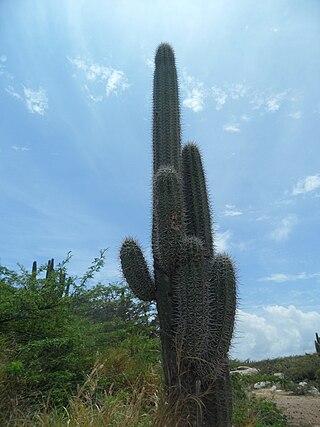
Stenocereus griseus, also known as the Mexican organ pipe, dagger cactus, pitaya, and pitayo de mayo, is a species of cactus.

Thelocactus rinconensis, synonyms including Thelocactus nidulans, is a species of cactus. It is endemic to north-east Mexico.

Thelocactus tulensis is a species of cactus. It is endemic to Mexico.

Cereus aethiops is a species of cactus found from Uruguay to Argentina.

Pelecyphora macromeris, the nipple beehive cactus, is a species of cactus in the United States and Mexico. In the Chihuhuan Desert, it is common and has a wide range.

Echinopsis aurea, is a species of Echinopsis found in Argentina.

Lobivia ferox, is a species of Lobivia found in Bolivia and Argentina.

Xiquexique gounellei is a species of plant in the genus Xiquexique of the cactus family. Common names include "Alastrado", "Chique-Chique", "Xique-Xique" and "Xique-Xique das Pedras".
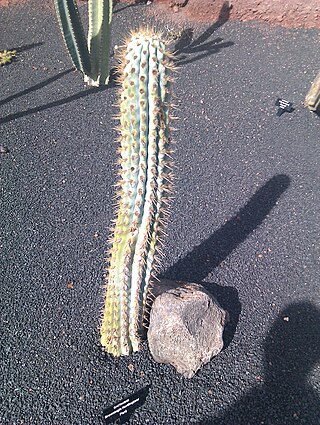
Browningia hertlingiana is a species of Browningia found in Peru.

Pachycereus weberi is a columnar cactus plant native to Mexico.
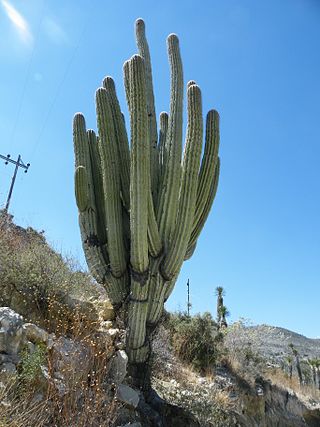
Cephalocereus fulviceps is a species of Cephalocereus from Mexico.
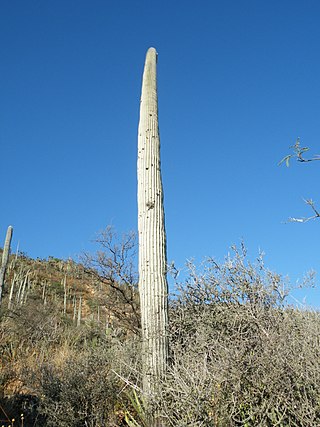
Cephalocereus columna-trajani is a species of cactus from Mexico.

Cephalocereus mezcalaensis is a species of Cephalocereus from Mexico.
Cephalocereus apicicephalium is a species of cactus from Mexico.

Cephalocereus scoparius is a species of Cephalocereus from Mexico.

Borzicactus sepium is a species of Borzicactus found in Ecuador.
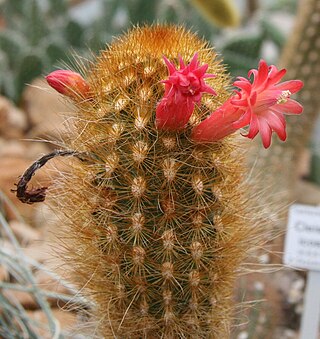
Borzicactus icosagonus is a species of cacti found in Ecuador and Peru.
























